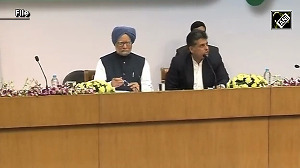Part I: CAT 2009: What to expect
So what does a move to computer-based testing mean to a CATter? Career Avenues conducted an impromptu exercise -- we administered two tests (with similar levels of difficulty) to a group of test-takers. We first administered a paper-based test to the group and then a CBT format test to them. We then recorded their experiences post the tests. Also an analysis of their scores gave us an indication of the final outcome of their performance on the test. Finally, we compared it with published data and research articles on student experiences when GMAT went online from a paper-based test to a computer-based test. And the results are very similar.
Please note that the CBT administered allowed the students to see all the questions in a section and move freely between sections. Questions asked were of equivalent level of difficulty to past CATs.
What we found was this:
- Yes, there is an overall drop in attempts and scores of the students when they take the CBTs compared to paper-based tests. Also the error rate went up marginally.
- The drop in scores is across all types of questions (sections) for the CBT.
- Students with good computer skills did far better than students with lower computer skills in the CBT.
- Students with good computer skills did better in paper-based tests than students with good computer skills who took the CBT.
- Draiwng from the above findings, while good computer literacy is an advantage in the CBTs, in general, paper-based tests are easier to score than the CBT.
- When compared to paper-based tests, in CBTs the average question solving time increased significantly in Quant and DI, but not so much in Verbal and RC.
- After getting the answer, while students spent eight seconds on an average to shade an oval in the OMR sheet on the paper-based test, they took the same amount of time to click the answer in the CBT. So more time was being spent on solving the question rather than marking the answer.
- Students opined that they kept coming back to the same question more frequently in the CBT when they were unable to answer a question, compared to paper-based tests.
- Some students reported that even after attempting a question, they ended up reading all the questions again when they saw the same questions after a significant period of time.
- Students did find it more difficult to concentrate across all sections in a CBT scenario. This was most visible in DI and RC, and least in Verbal.
- In RC, they reported that they lost the thread of the passage frequently, and had to re-read parts of the passage.
- Some students reported that they did far more wild guesswork in CBT format compared to the paper-based format.
- Some students reported more time awareness and time pressure in a CBT format.
- A difficulty that some non-computer savvy students faced was using the mouse to scroll up and down, and also navigation between various pages of the test.
What does this mean for your preparation?
1. Familiarity with computers and computer-based testing
Students are expected to have basic familiarity with the operations involved in using a computer. While using the mouse and the keyboard is a very basic function, the CAT would involve a level keeping the least computer-literate CAT aspirant in mind. Students need to understand the nuances that differentiate a computer-based test (from a normal test) -- precious seconds can be lost if the student is not familiar with computers and more importantly a student can slip in the advantage that he has, if she/he has not worked enough on CBT. For a student who has not been familiar with computers, it is going to be a definite disadvantage. Make sure that you solve atleast 30-40 full-length CBTs across your CAT prep, starting NOW. Also try to do your preparation of fundamentals or reading of newspaper on the computer.
2. Adaptability
The number of tests that have been promised by most CAT coaching institutes will not be enough for a student to sufficiently practice and adapt themselves to the new format. We recommend around 30-40 tests under varying conditions in order to be sure of optimal performance during the CAT exam. It is quite clear that the surrounding conditions play an important role at the time of the test. Hence the student will do well to have practiced quite a bit and at different times during the day.
CAT aspirants also need to move their learning online as much as possible. This will ensure that they are adapted to and are comfortable working on a computer. Skills such as quick reading of comprehension on the computer require a sufficient amount of practice to ensure peak performance at the time of the CAT exam. And they need to ensure that they answer at least 5 papers of each of the 4 types of question papers mentioned in the first article of this series.
3. Faster SWOT
In the new scheme of things, it is even more important to know your strengths and weaknesses well before the actual CAT. We suggest that, by August, you map out your strengths and weaknesses topic-wise and chapter-wise across all sections. This will help you draw out a clear development plan to address your weaknesses and give sufficient time to fine-tune your test taking strategy on live CBTs. Stress management and time management become the key strategic strengths to have.
In a paper-based format, you could easily search for easy questions, but to do the same in a computer-based test takes that much more time. And if the test is one-question-at-a-time, then you need to know which questions to quickly skip and which question to spend some time on. In a single-question format CBT, very often you may end up with one of these two cases:
a) Spending too much time on a difficult question early on and missing out even seeing an easy question, and
b) Not spending sufficient time to answer a question and skipping it, and later realising that you have time left but you have reached the end of the section.
A SWOT and a plan assist you in addressing these issues.
4. Focus on a personalised strategy for each section
Strategies like speed-reading are not likely to be of great help, but quick calculations or answering the questions mentally are good strategies to have. Also, you need to build a personalised strategy to address specific areas. So to improve scores in Quant, while one person might be able to work more on solving questions mentally, another might rely more on the process of elimination or fitting in numbers. These strategies need to be tested in an actual CBT. One strategy may work on a paper-based test but may be tough to implement on a computer-based test, so figure out what strategies work for you by September-end.
5. Greater focus on accuracy
Unlike in a paper-based test, where you have more time to think, the CBT will pass by faster, and you will have less time to think. The test might just leave you with lesser attempts. And to get a high score, you will need better accuracy. Like in the GMAT, there is now a premium on accuracy in CAT.
6. Shortcuts and strategies are the kingmakers
It is obvious that you cannot solve all questions. So shortcuts play a very important role. And they need to be practiced far better than just in mock CAT situations. You need specially structured material to fine-tune this preparation. The shortcuts and strategies that you applied in a paper-based test are not different from the shortcuts that you now need. However, the focus is more on how well you acquire them, and how you are able to apply them in a test format.
For instance, you need to fine-tune your Process of Elimination technique or Fit-in-good-numbers technique since you will have far less time given the fact that the question is on the screen and the scratchwork is done on a rough paper, which would require you to re-write some parts of the question.
7. And finally, making luck work your way
If you are lucky, you may get a time slot in the last part of the 10-day period. CBT CAT will have surprises for a early test-taker but not for those taking it later as they would be aware of the general pattern, and they will prepare accordingly. So, there are many advantages for the test-taker who takes the test later:
a) Will know paper pattern
b) Will know general difficulty level
c) Will have more time to prepare
d) Can practice more papers and questions once the pattern is out at the end of day 1 session 1
e) Less anxiety
So hope that you get the opportunity to take CAT in the last 2-3 days of the 10-day period.
Part I: CAT 2009: What to expect
The author of the article is CEO of Career Avenues and now ProAvenues, who has helped thousands of students into the IIMs over the past 12 years. You can reach him on amit@catavenues.com
For more articles and CAT updates, visit the blog on www.catavenues.com






 © 2024 Rediff.com -
© 2024 Rediff.com -